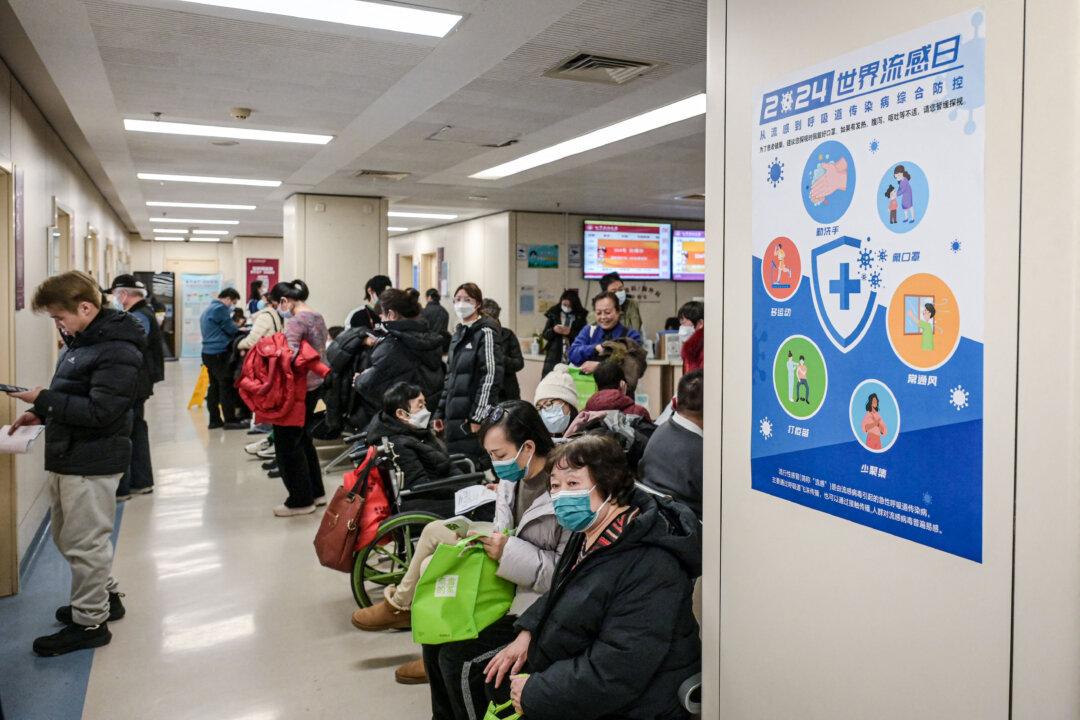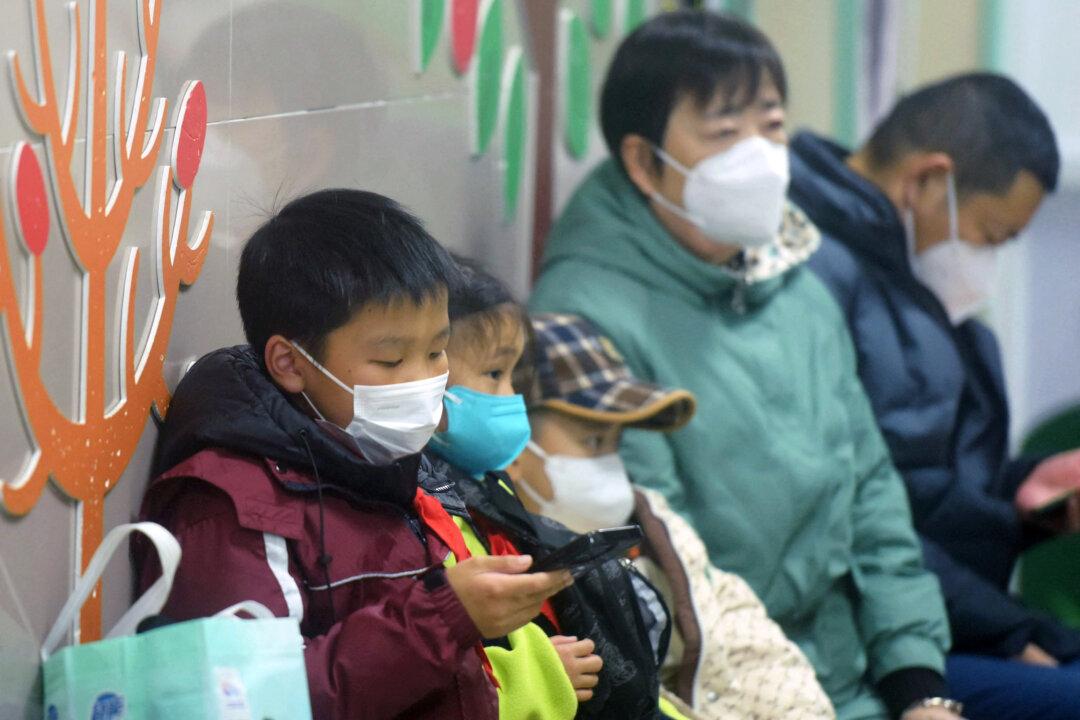Chinese students attending universities across the world have gathered to show their support for those Chinese protesting against zero-COVID measures in China.
Protests of various sizes have taken place across China since Nov. 27, when large crowds in Shanghai went to Wulumuqi Middle Road, named after Xinjiang’s capital city Urumqi, to mourn the victims of an apartment building fire in Urumqi.
The candle vigil turned into a large-scale protest, later spreading to other cities and top universities in China against the communist regime’s authoritarian COVID policies.
The Epoch Times could not independently verify the number.
Tens of thousands of overseas Chinese students rallied on Nov. 29 in different countries to support protesters in China. They chanted: “CCP, step down!” “Free Chinese protesters!” “Give me freedom, or give me death!”
Among the protests were those held at the University of Cambridge and the University of Oxford in the U.K., and Harvard University, UPenn, UCLA, Columbia University, and Florida State University in the United States.
The Chinese language edition of The Epoch Times interviewed some of the protesting students and their supporters.
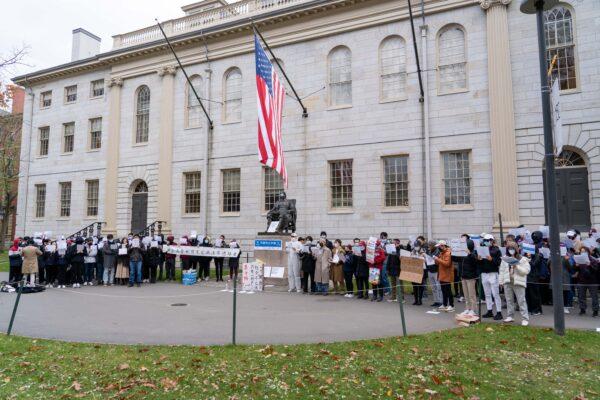
‘It’s My Duty’
On the evening of Nov. 28, nearly a thousand Chinese students gathered outside Low Memorial Library at Columbia University, N.Y., to show support for the protests in China and hold a vigil for the victims who died in the Xinjiang apartment fire.A Columbia University student gave a speech at the rally and led the crowd to shout slogans. As to why he joined the rally, he told The Epoch Times, “It’s my duty,” citing the protesters in Tiananmen Square in 1989.
Shawn, one of the rally conveners and a student at Columbia University, said that he felt that many students have had a political awakening.
“For more Chinese students, it may be because of the incident in Urumqi that they start to care. I hope they can be courageous,” he said.
A man from northern China who went by the pseudonym “Democracy” told The Epoch Times that his family’s home back in China is blockaded by an iron fence.
“It is no different from prison,” he said.
“My sister used to be very supportive of the zero-COVID measures, but after 2 or 3 months of being shut in at home, she can’t take it anymore.
“China’s problem is the problem of the social system. If you don’t solve the problem of the system, everything else is useless. Any minor change is useless,” he said.
“Seeing Chinese students actively participating in the vigil and rally, I’m really happy. I think there is still hope for China.”
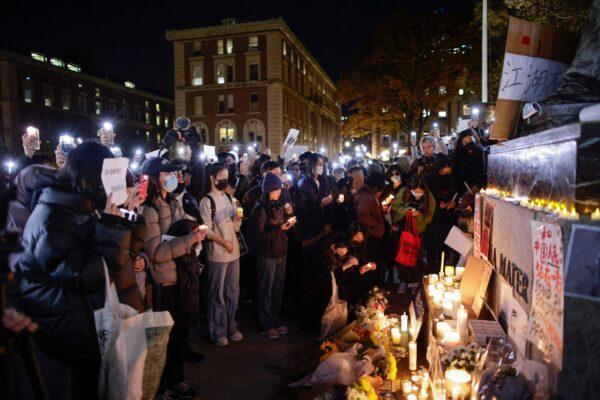
‘Freedom Represents Goodness’
Approximately 1,000 Chinese students and their supporters demonstrated in front of the Chinese consulate general in New York City on the night of Nov. 29 to offer their condolences to the victims of the Urumqi fire and protest against the Chinese communist regime.A Chinese student who only gave his name as Jeremy told The Epoch Times that he hadn’t been back to China due to the draconian zero-COVID measures since the pandemic broke out.
Jeremy said that he wasn’t afraid of protesting in front of the Chinese consulate because “Freedom is a higher value for me.”
“Freedom is inherent and should be fought for because freedom represents the value of goodness, and it is what everyone yearns for,” Jeremy added.
On Nov. 29, Chinese students at Harvard, Massachusetts, and Florida State University, Fla. also held a rally to support the protests in mainland China.
“I don’t know how much influence this can be, but I know our gathering will surely bring the light of hope,” said Zhao, a participant at the Florida State University rally.
Meanwhile, on the same night, Chinese students from various universities in the Greater Los Angeles area, including the University of California, Los Angeles, and the University of California, Irvine, held anti-COVID lockdown protests.
‘It’s My Duty to Participate’
About 100 overseas Chinese students studying in the U.K. gathered at the campus of Cambridge University on the night of Nov. 29 to support the protesters in China.“We are standing here today [to speak out] because we love our country and the 1.4 billion compatriots," an anonymous Chinese student told the rally.
“Loving our country doesn’t equal loving [the Chinese Communist] Party,” the student said.
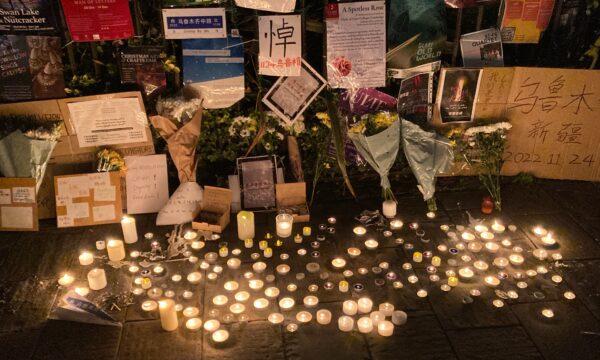
Lao Dao (pseudonym), a Chinese student from Oxford University, said at the Cambridge candle vigil that he loves China—the land, the people, the food—but not necessarily the political system.
“My parents participated in the student protests on Tiananmen Square in 1989, and now I am experiencing such activities personally. It’s my duty to participate,” Lao said.
“Letting such a tragedy go unnoticed would be aiding and abetting the dictatorship. It’s also a derelict of my duty as a citizen,” he added.
Ma Luo, a Cambridge student, said this was his first time attending a candle vigil and a rally. Ma said he was touched by the courage of people protesting in China.
‘Blank Paper Protests’
Nearly 100 students gathered at the University of South California (USC) at 7 p.m. on Nov. 29 to support what some called the “blank paper protests” or the “blank paper revolution” or “blank paper campaign” in China.Students at universities in Chinese cities, including Nanjing and Beijing, have been seen in online videos holding up blank sheets of paper in silent protest, a tactic to show the Chinese communist regime’s stringent censorship.
Wang Han, a USC student, said that Chinese people couldn’t take the zero-COVID measures anymore, as they are worried that their relatives and themselves would be the next victims.
“Courage is infectious. Maybe many people still lack the courage, but now more and more courageous people have stood up to protest,” Wang said.
‘I See Hope’
At 7 p.m. on Nov. 29, hundreds of overseas Chinese students and their supporters held a candle vigil near the LOVE sculpture at the University of Pennsylvania.Kelsang Dolma, a Tibetan student at the university, told The Epoch Times that he was encouraged to see so many Chinese students protesting.
Dolma said that he participated in many protests by Tibetans, Uyghurs, and Hong Kongers, but he saw few overseas Chinese participating.
“It’s encouraging to see this, to see so many people coming together, which is a huge turning point,” Dolma said.
“I think this is the first time large numbers of Chinese citizens have come out to protest,” he said.
“I see hope, a lot more hope than before.”
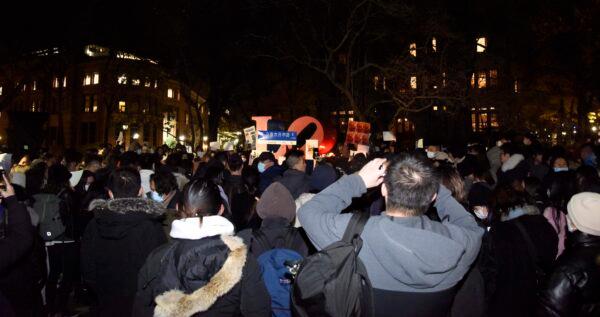
Matt Dime, a Uyghur student, studying at Temple University, Pa., participated in a rally held on his campus on Nov. 29.
He said he wanted to pass a message to Chinese people and his fellow Uyghurs in China’s far-western Xinjiang: “Please stay strong. We are with you.”
Haiyuer Kuerban, the head of the World Uyghur Congress (WUC) Berlin Office, attended a rally with Chinese students in front of the Chinese consulate in Berlin on Nov. 29.
“Today, Uyghurs, Tibetans, and Hong Kong people stand in solidarity with Chinese students to express their disappointment, anger, and condemnation at the CCP regime,” he said.
‘My Generation Must do Something’
Nearly a thousand people, including Chinese students, Hong Kongers, and Taiwanese, gathered in front of the Art Museum in downtown Vancouver, Canada, on Nov. 27.“When our nation is in jeopardy, every generation should shoulder the responsibility,” a Chinese student in Vancouver, surnamed Chen, said.
“My parents and their generation joined the 1989 student movement. My generation must do something as well.”
Comparison to Tiananmen Protests
China observers have pointed out that this kind of situation where the people unite as one to resist the Chinese Communist Party (CCP) has not occurred in mainland China since the CCP took power in 1949.Even during the June 4 student movement, they did not explicitly shout the slogan “Down with the Communist Party.”
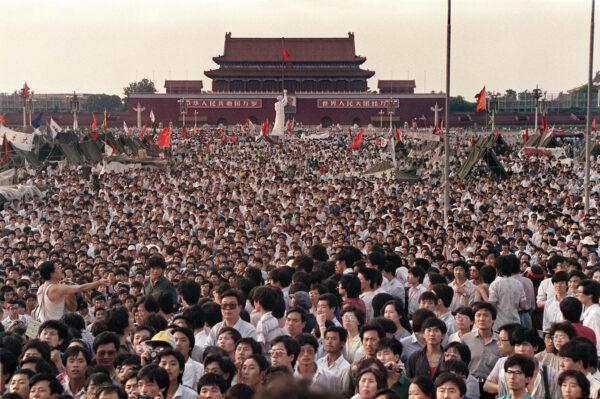
Heng He, a U.S.-based current affairs commentator, told The Epoch Times on Nov. 28 that social conflicts had been overshadowed by the fast-developing Chinese economy over a long period of time.
But now people want the COVID lockdowns to be lifted and their freedoms back.
“The common appeal has elevated to more profound social issues, that is, questioning the CCP’s rule and demanding changes,” Heng said.
Heng believes that the COVID protests are different from the Tiananmen protests in 1989.
“The eruption of the protests across the country is unlike those in 1989, which were mainly in Tiananmen Square in Beijing so that the CCP could concentrate its efforts to eradicate it. But now it is not at one point, it actually has no organization, no center, and it blooms everywhere ... So it’s very hard for the CCP to totally suppress it.”
Sheng Xue, a Chinese-Canadian writer, told The Epoch Times on Nov. 28 that the tyranny of the CCP has reached the point where there is no bottom line.
The zero-COVID policy and measures have lasted for three years and affected the livelihoods of all classes and groups in China. It prompted people to reexamine the current system of the CCP.
“This is obviously different from the June 4 movement. In 1989, many people saw hope in China, believing that China’s political system might be adjusted and that there was hope for political reform,” Sheng said.
“Now people are standing up and revolting because they realize that the root of all today’s sufferings is the authoritarian and tyrannical system of the CCP.”


